Arnold Wong and Jinsu ‘Steven’ Park met on Instagram, with the Sydney chefs becoming fast friends. It wasn’t long before the Café Paci and Restaurant Leo young guns decided to combine their collective talents for a sold-out pop-up at Cedric’s that proves the future of dining is as bright as the preserved lemon found on a dish on their six-course menu.
Chef collaborations are nothing new, but are largely the domain of big names who can easily secure a space (or use their own restaurant) to run such events. It’s rarer and certainly much more difficult for chefs such as Wong and Park to make a pop-up happen — but they did.
Wong speaks to Hospitality about how it all came about, putting up plates that reflect their own culinary ethea for the first time and demonstrating the versatility of humble ingredients.
There’s nothing like a snap of hand-rolled trofie to bond over, and the same can be said about film photography. Such was the material that led to Arnold Wong and Jinsu ‘Steven’ Park ‘meeting’.
“We started off as Instagram friends,” says Wong. “I liked his photos of pasta and gave him a follow and he liked my film photography; we both have similar aesthetics.” After Park dined at Paci, the pair chatted and “became real-life friends”, says Wong. “We went out for a few meals together and I was like, ‘Hey, we should do a pop-up one day’.”
The big question wasn’t how, but where. As a frequent patron of Cedric’s in Town Hall, Wong struck up a friendship with Co-Owner Taiyo Shima. “I worked out Taiyo didn’t open the venue on Monday and Tuesday and he was super keen on us doing something together,” he says. “These opportunities are rare. But for young chefs like us, it’s really inspiring and a chance for us to get our names out there.”
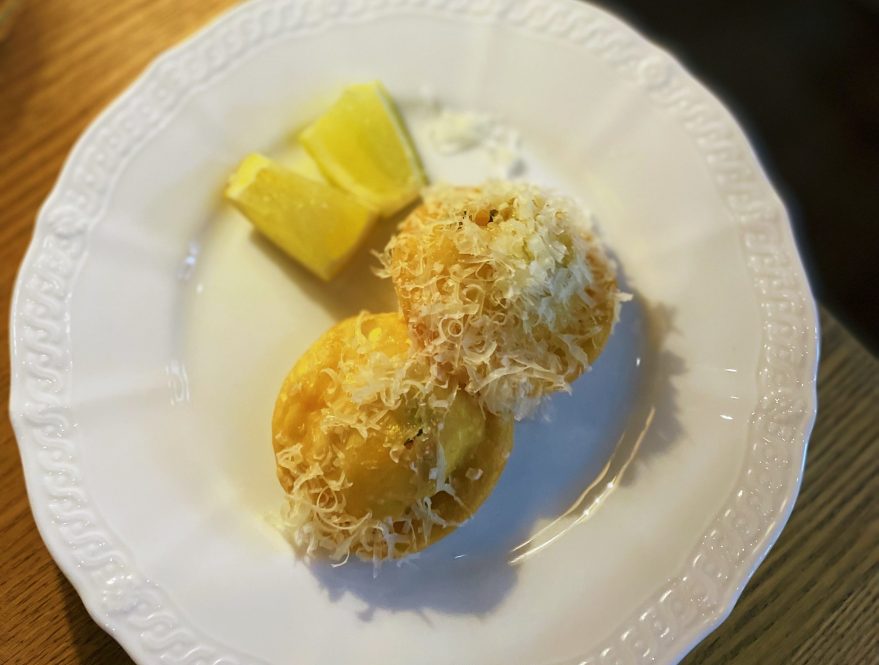
With the venue locked in, Park and Wong moved ahead with four sittings over two nights. The vision was to do something a little different (but not a complete departure) from the dishes they plate up during their day jobs.
“Our focus was on using humble ingredients to showcase our heritage through the medium of Italian cooking,” says Wong. “I see so many similarities between Italian and Asian cuisines.
“The style of food is communal and it’s all about giving flavour to starch and feeding the masses. We wanted to make people think about the similarities between the different cultures and techniques.”
It took around two weeks for Wong and Park to iron out the six-course menu. Week one was mostly spent on developing the dishes, with some morphing into different forms by the end of week two. “We were going to do fried bread with prawn mousse inside like prawn toast, but we didn’t want people to fill up so early in the dinner, so we changed it to something like a fried prawn wonton,” says Wong.
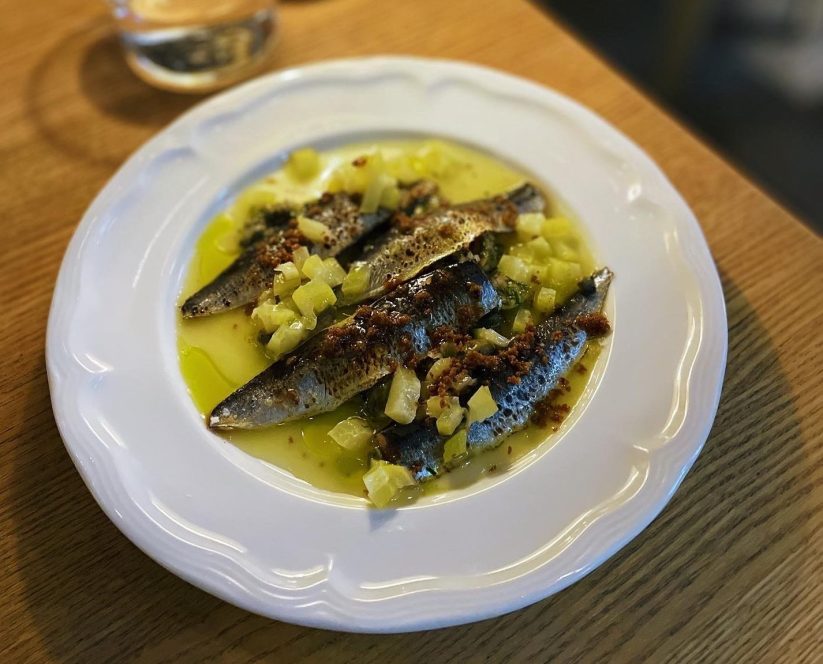
Sardines were covered in a blend of soy sauce and olive oil before being caramelised with a blow torch and teamed with olive tapenade and preserved lemon. “I used my mum’s lemons from the Central Coast which I preserved in half sugar and half salt for a few weeks,” says Wong. “It was my first time making it, but I needed to use it because it was almost like candy and it balanced the fish.”
Park was behind the two pasta dishes: lorighittas with cuttlefish, bottarga and chilli and agnolotti with pork, tomato butter and potato. Lorighittas is one of the most traditional pasta shapes made in the South of Italy, with the braided rings requiring a deft hand to twist the strands of semolina dough together.
The creation of the dishes offered a chance for Wong to pick up some ideas to put to work on the pasta section at Paci. “I have my way of doing things, but I really respect his pasta game,” says the chef. “The dusting mix for pasta is traditionally semolina or plain flour. But he uses potato starch and coarse and fine semolina to prevent the dough from being overworked. It’s just one example of the details of his pastas that I learned from.”
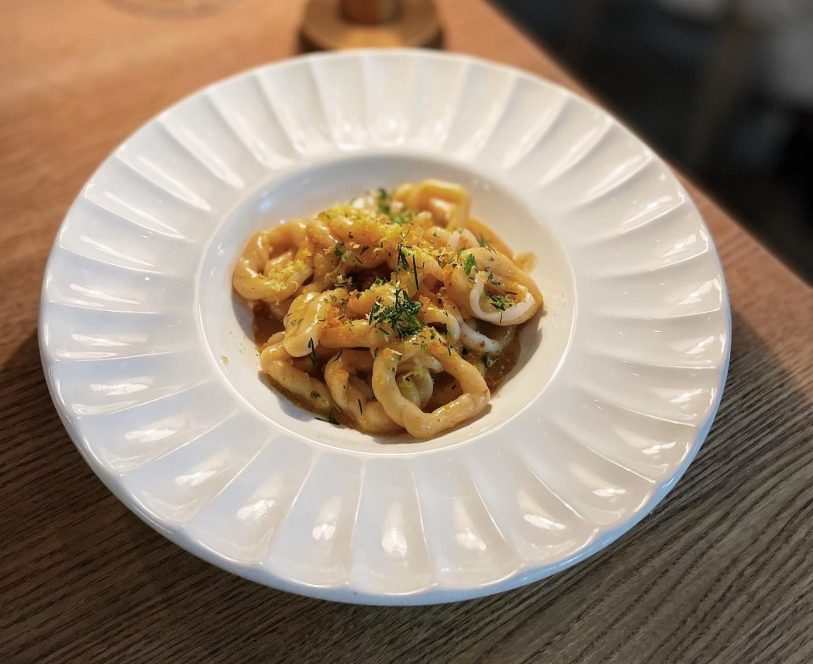
The dish saw Italian and Korean anchovies combined together, with the latter an ingredient Wong hadn’t come across before. “Korean anchovies are very distinct,” he says. “We used the two anchovies to showcase the similarities between the two cuisines.”
The collaboration was a learning exchange that worked both ways, with Wong’s poached duck with master stock, sorrel and grapefruit demonstrating the skill required to nail the foundational dish. “Poaching is a Chinese technique that gently cooks meat while giving it flavour, and he had never seen it,” says Wong. “We both learned a lot from each other equally.”
The chef names the dish as the most challenging of the pop-up due to the way in which the protein cooks. While a master stock traditionally comprises ingredients such as shaoxing wine, ginger and shallots, Wong took a different approach to the aromats. “I was thinking of using Italian flavours instead such as red wine, sage, rosemary and bay leaves as well as juniper berries,” he says.
“I had to poach the duck until it reached 40-something degrees Celsius, cool it down, render the fat in the oven and carve the legs because they cook differently to the breast.
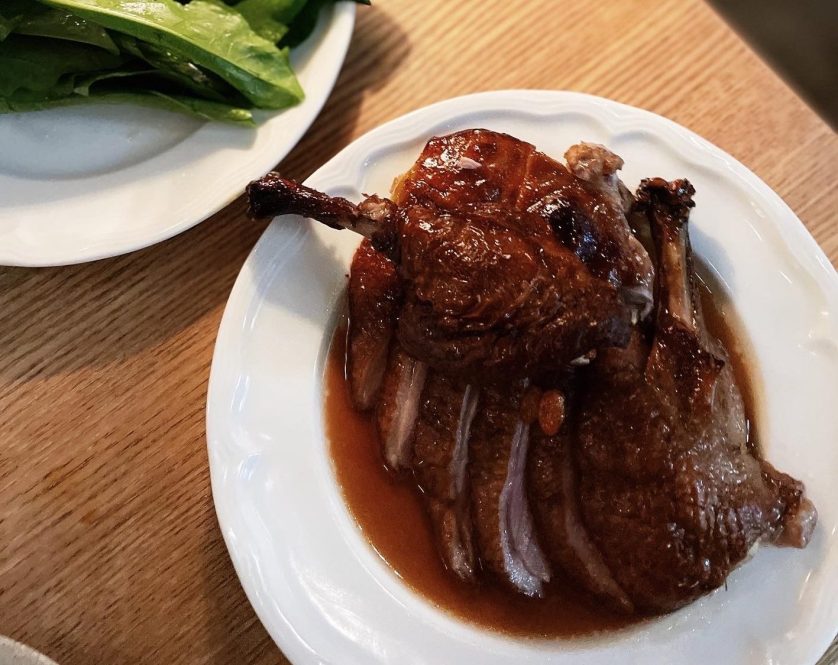
“The legs went back in the oven and then the sauce component had the poaching liquid reduced with goji berries and grapefruit juice for sweetness and acidity. The goji berries were a nice touch to remind everyone that it wasn’t a purely western dish.”
Basil sorbet with mascarpone and Thai basil oil was the final course, which was made in collaboration with Mapo. Wong went heavy on the basil, spending up big on the herb to make sure the flavour cut through (and it did).
The two-day pop-up wasn’t just a passion project for the chefs — who pulled back-to-back 15-hour shifts to prepare — but a test run of what the future could hold. “It was special to cook our own food and think outside of the box — not just purely using what we have learned from Leo and Paci,” says Wong.
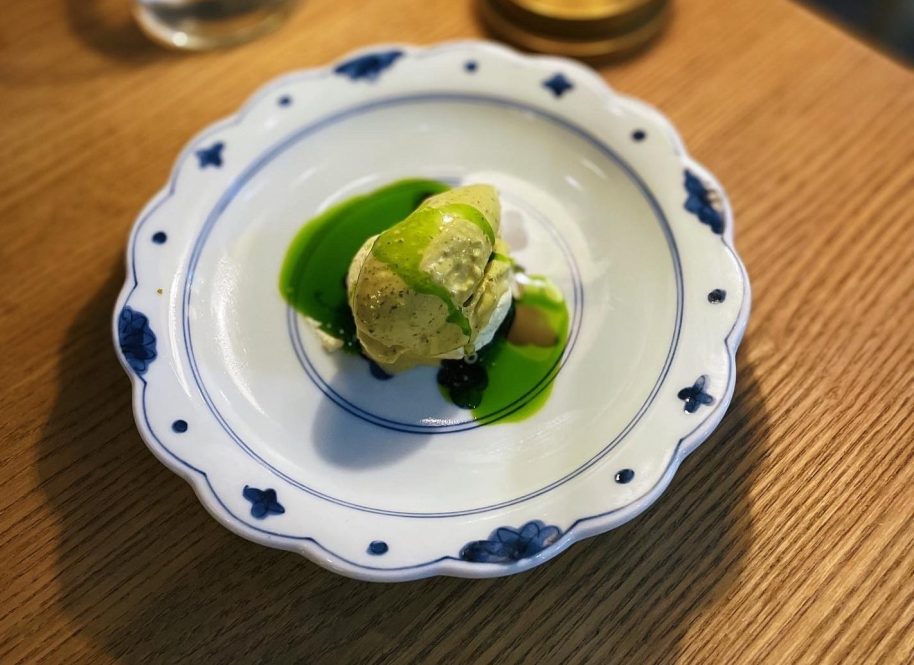
“We both love working at our restaurants, but doing the same thing every day becomes routine. Something like this makes us think about food costs, how we can make a whole menu work and how to work with front of house. It’s a tiny restaurant start-up.”
Wong says there’s more to come after the first pop-up, with a second iteration likely to happen in the near future. Or potentially, something much bigger. Either way, the chefs are onto a good thing. “I’m happy it all worked out because it proved the path I’m on feels right,” he says.
“Some chefs look at it as a job, but Steven and I see a deeper purpose and meaning. We are passionate about sharing our cultures through food. With a few more events, maybe we can open our own places in a few years’ time … We’re still building our skills, but our creativity pushes us and there will be more to come.”
Sponsored Content

Celebrating coffee moments with Buondi
Sponsored by Nestlé Professional

Meet Force, the new player in commercial cookware
Sponsored by Tomkin
Trending Now
Resources
Lorem ipsum dolor sit amet, consectetur adipiscing elit. Fusce ac ornare lectus. Sed bibendum lobortis...
Lorem ipsum dolor sit amet, consectetur adipiscing elit. Fusce ac ornare lectus. Sed bibendum lobortis...
Sign up for our newsletter
